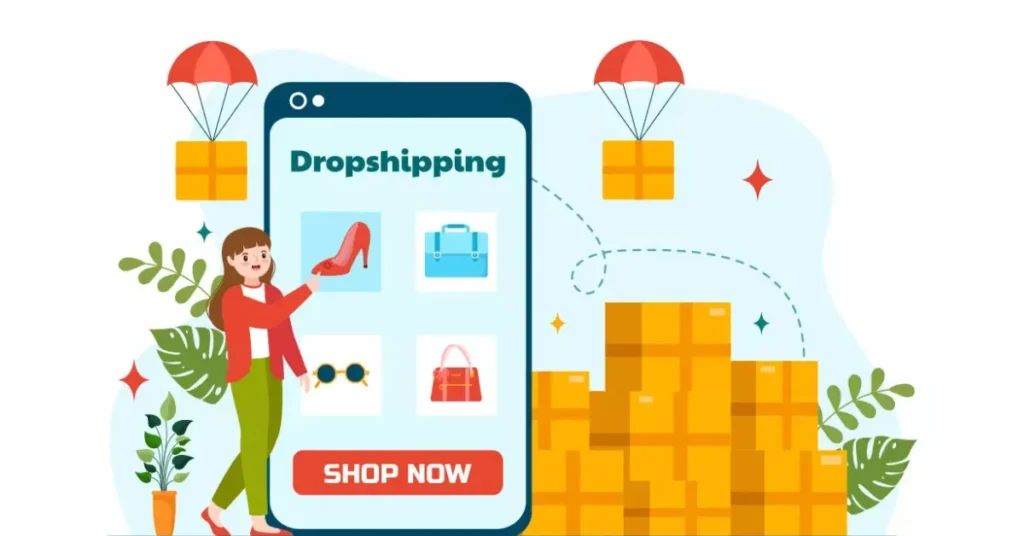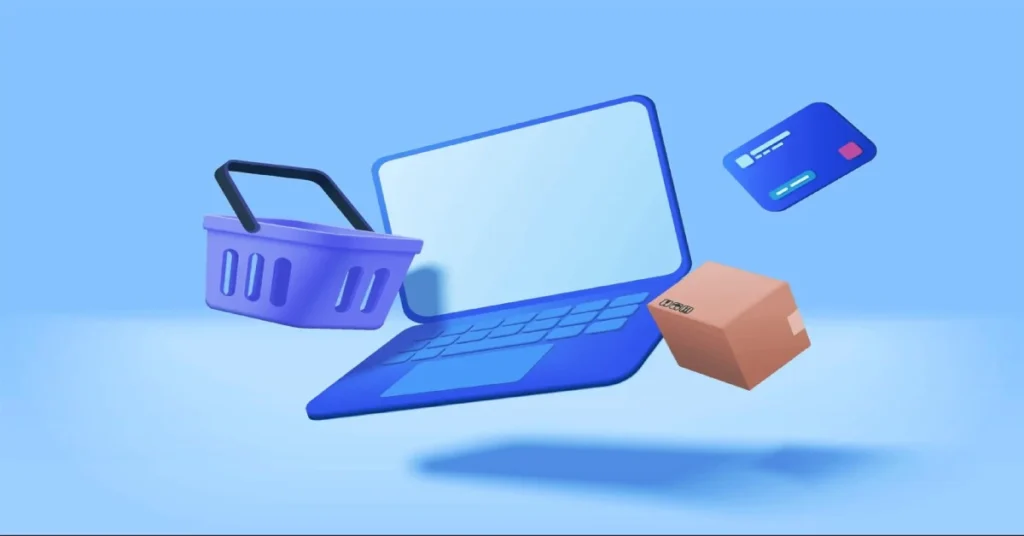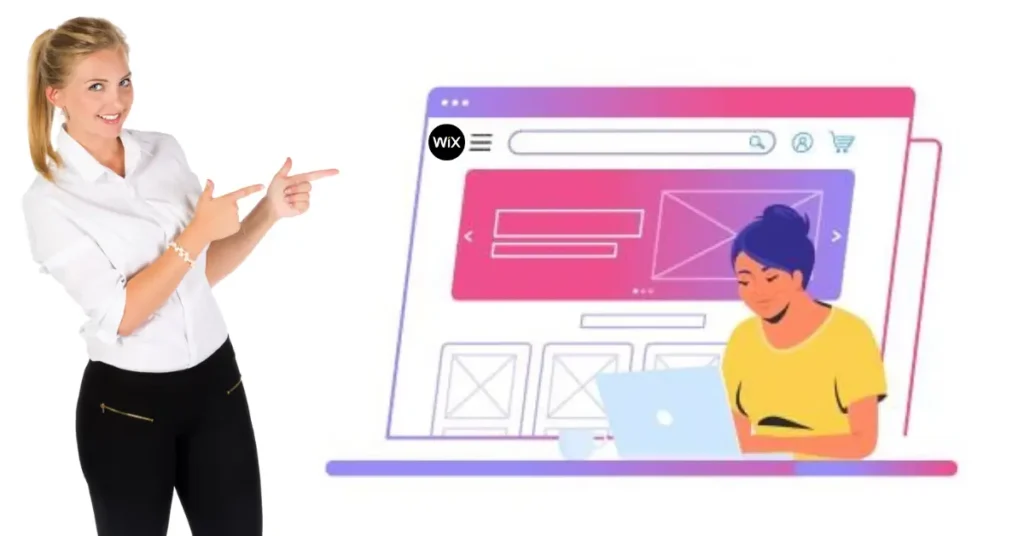Ecommerce PPC. If you run an online store in the United States, you’ve probably heard this term. It simply means paying for ads to send people directly to your products. Think of it as putting up a digital billboard exactly where your ideal customers are already looking. For many businesses, it’s not just an option; it’s a necessity for bringing in sales right away.
The internet is a busy place. Millions of products compete for attention. Pay-per-click (PPC) advertising gives your store instant visibility. It lets you target shoppers with incredible precision. You can show your ads only to people searching for exactly what you sell. This means your marketing dollars work harder. You get measurable results, seeing exactly what you spend and what you earn back.
According to the Statista report about Mobile advertising from 2020 to 2025, Mobile advertising spending in the United States continues its robust growth, projected to exceed $200 billion for the first time in 2024, reaching approximately $202.59 billion, and further increasing to $228.11 billion in 2025. This significant growth, with mobile accounting for around two-thirds of total digital ad spend, is primarily fueled by the high penetration of smartphones and extensive mobile internet usage in the US, with search, video, and banner ads being the leading formats.
In this article, I will explore how you can make your ecommerce PPC efforts truly shine. I’ll cover the basics to get you started, then dive into smarter ways to run your campaigns. I’ll also look at some exciting possibilities for the future of online advertising.
Building a Strong Foundation for Your Online Store’s Ads

Every successful advertising effort starts with clear goals. You don’t just want clicks; you want sales. This means looking past simple numbers. Focus on what truly matters for your business:
- Return on Ad Spend (ROAS): How much revenue do you get for every dollar spent on ads?
- Cost Per Acquisition (CPA): How much does it cost you to get one new customer?
- Conversion Rate: What percentage of your website visitors buy something?
- Customer Lifetime Value (CLTV): How much profit does a customer bring over their entire relationship with your brand?
Knowing your profit margins for each product helps you set smarter bids. It ensures your ad spending leads to real money in your pocket.
Making Your Product Information Perfect
Your product information is the backbone of your campaigns, especially for Google Shopping and Amazon Ads. Imagine a shopper looking for “red leather boots.” If your ad doesn’t clearly say “red leather boots” and show a great picture, they will scroll past. You know Amazon’s growing importance for online sellers. If you’re looking to truly fine-tune your campaigns on that powerful platform, you’ll find even more specialized insights in our guide on how to Maximize Your Amazon Ads ROI.
- High-quality product data: Ensure your product titles, descriptions, images, and unique identifiers (like GTINs or MPNs) are accurate and complete. Think like a shopper: what would they type or look for?
- Custom labels: Use these to segment your products. You can group items by profit margin, seasonality, or promotional status. This allows for more precise bidding and budgeting.
- Fixing errors: Regularly check your product feed for errors. Incorrect information can prevent your products from showing up in searches.
Smart Keyword Strategies for Selling Online
Keywords are the bridge between what people search for and what you sell. WordStream’s “Easy Keyword Research Guide” (published August 9, 2017) outlines a straightforward, step-by-step process for identifying effective keywords for both organic SEO and paid PPC campaigns.
The guide emphasizes that keyword research is crucial for understanding what audiences are searching for and finding relevant terms with sufficient search volume and appropriate competition levels. It suggests starting with broad topic brainstorming, then using keyword tools (like WordStream’s own Free Keyword Tool, which provides search volume, CPC, and competition data) to expand the list and analyze specific keyword metrics.
The article also highlights the importance of considering user intent, competitive landscape, and integrating keyword research into overall content and marketing strategies to drive traffic and business growth.
- Finding High-Intent Keywords:
- Branded vs. non-branded: People searching for your brand name are usually ready to buy. Non-branded keywords (like “running shoes for men”) bring new customers.
- Long-tail keywords: These are specific phrases, like “lightweight women’s hiking boots size 7.” They might get fewer searches but bring in very interested buyers.
- Learning from competitors: What keywords do your rivals rank for? Tools can help you discover terms you might have missed. This can reveal hidden opportunities to reach ready-to-buy customers.
- Using Negative Keywords Wisely: This is about telling ad platforms what not to show your ads for. If you sell high-end jewelry, you don’t want your ads appearing for “cheap costume jewelry.” Negative keywords save you money by preventing irrelevant clicks. Review your search terms report often to find new negative keyword ideas.
Creating Ads That Grab Attention
Your ad copy and visuals are your digital storefront.
- Highlight what makes you special: What sets your product apart? Is it free shipping? A unique feature? A limited-time offer?
- Use ad extensions: These add extra information to your ads, like store ratings, phone numbers, or links to specific product categories.
- Visual appeal: Use eye-catching product images and videos. For social media ads, compelling visuals are often more important than text.
Making Your Website Ready for Sales
Even the best ads fail if your website isn’t ready to convert visitors into buyers.
- Ad-to-landing page relevance: If your ad promises “50% off summer dresses,” the landing page must immediately show those dresses at 50% off.
- Clear calls to action (CTAs): Tell visitors exactly what to do next: “Shop Now,” “Add to Cart,” “Learn More.”
- Speed and mobile-friendliness: Shoppers expect fast-loading sites, especially on their phones. Slow sites lose sales.
- Build trust: Display customer reviews, security badges, and clear return policies.
Watching Your Numbers Closely
You can’t improve what you don’t measure. Setting up robust tracking is vital.
- Google Analytics 4 (GA4): This helps you understand how people interact with your website. Set up conversion tracking for purchases, adding to carts, and other key actions.
- Conversion tracking: Make sure your ad platforms (Google Ads, Meta Ads) are correctly tracking sales. This data informs your optimization decisions.
Smart Tactics for Your Online Store’s Ads

Once you have the basics down, you can explore smarter ways to run your campaigns. Google Ads support outlines that Shopping ads enable retailers to visually showcase products across Google’s network, managed through Google Merchant Center and campaigns within Google Ads.
These ads, created automatically from product data, appear on the Shopping tab, Search, Images, Search Partners, and Maps. The guide details both Standard Shopping and Performance Max campaigns, emphasizing the latter’s AI-driven optimization for reaching customers, alongside various bidding strategies and customization options to boost product visibility and sales.
While setting your budget, a common question often arises: Is a small daily spend truly effective? We tackle this directly in our discussion about Google Ads Cost: Is $10 a day Budget enough for Google Ads?, offering insights into making every dollar count.
Diving Deep into Ad Platforms
Every ad platform has its strengths for online stores. Understanding these differences can boost your results. When you’re ready to dive into the specifics of where to run your ads, we’ve got you covered. Check out our detailed comparison of Paid Advert Platforms to help you choose the perfect fit for your business goals.
- Google Ads for Online Stores:
- Performance Max: This automated campaign type uses AI to find customers across all of Google’s channels (Search, Shopping, Display, YouTube, Gmail, Discover). Provide strong “audience signals” (who you think your best customers are) and diverse visuals and text. According to Google support, Google Ads has introduced updates to Performance Max campaigns focused on customer lifecycle goals, enhanced image controls, and improved search targeting. New retention goals let advertisers bid more for lapsed customers, and a new reporting column tracks customer acquisition cost (CAC). Performance Max now auto-sources images from landing pages, giving advertisers the ability to review, remove, or opt out. Campaign-level negative keywords have expanded from 100 to 10,000, allowing for more precise targeting.
- Google Shopping (Standard Campaigns): These ads show product images, prices, and your store name directly in search results. Use custom labels to segment products and adjust bids based on profit margins.
- Search Campaigns: Beyond product searches, use Dynamic Search Ads to catch long-tail queries. Create highly specific campaigns for unique product features or brands you sell.
- YouTube for Online Stores: Use “shoppable ads” that link directly to products. “TrueView for Action” campaigns encourage purchases directly from videos.
- Meta Ads (Facebook & Instagram) for Online Stores:
- Dynamic Product Ads (DPAs): These campaigns automatically show relevant products to people who visited your site or engaged with your content. Set up your product catalog carefully. Use advanced retargeting segments, like people who viewed a specific product category but didn’t buy.
- Smart Audience Building: Don’t just target broad demographics. Create “Lookalike Audiences” based on your best customers (those with high lifetime value). Upload customer lists for targeted campaigns or to exclude existing buyers from prospecting ads.
- Creative Strategy: Test different ad formats. Do lifestyle images work better than plain product shots? Do short videos outperform static images? Carousel ads can showcase multiple products.
- Amazon Ads for Online Stores:
- Sponsored Products, Brands, and Display: Each has a specific role. Sponsored Products: Get your items seen. Sponsored Brands promote your brand and multiple products. Sponsored Display reaches shoppers on and off Amazon. Learn when to use each for maximum effect.
- Bidding for retail readiness: Your bids need to be competitive. Consider your ACoS (Advertising Cost of Sales) to ensure profitability on Amazon.
- Amazon DSP: This allows you to reach Amazon’s audiences even when they are on other websites. It’s powerful for branding and remarketing at scale.
- Newer Platforms (TikTok, Pinterest) for Online Stores:
- TikTok: Think “shoppable” trends. Use Spark Ads to promote popular user-generated content featuring your products. Create short, engaging videos that fit the platform’s style.
- Pinterest: This platform is a visual discovery engine. Use “Idea Pins” with product tags. Catalog Ads turn your product feed into shoppable pins. Optimize for visual searches.
The biggest challenge many businesses face is that current advice often stops at “use these platforms.” There’s less guidance on how to truly make each platform sing for your unique online store. Imagine having a detailed recipe for each platform’s specific e-commerce needs, not just a general cooking guide. This deeper understanding helps you get more from your ad budget.
Smart Audience Targeting
Knowing who you’re talking to changes everything.
- Using Your Customer Data:
- Upload your customer email lists to ad platforms (like Google Ads’ Customer Match or Meta’s Custom Audiences). This lets you target existing customers with special offers. You can also create “lookalike” audiences based on these valuable customers.
- Connect your CRM (customer relationship management) system to your ad platforms. This helps you understand which ads attract your highest-value customers.
- Think about how customers interact with your site. Did they view a specific product category? Add items to their cart, but do not buy? Use this behavior to create highly specific remarketing segments.
- Advanced Remarketing: Don’t just show the same ad to everyone who visited your site. Segment your audience:
- People who viewed high-value items vs. low-value items.
- Customers who haven’t purchased in a while.
- People who added to the cart but abandoned it.
- Then, tailor your ads to each segment.
- Predictive Audiences: Ad platforms use AI to predict who is most likely to buy. Use these smart bidding strategies to let the platforms optimize for purchase likelihood.
Many guides discuss basic audience targeting. But what about understanding your customers so well that you can predict their next move? Imagine ads that know if someone is likely to be a loyal, high-spending customer versus a one-time buyer. Unlocking this deeper level of customer understanding could reshape how we advertise.
Understanding Your Real Profit
It’s easy to focus on ROAS (Return on Ad Spend), but what about actual profit?
- Moving Beyond Just Revenue:
- Factor in your Cost of Goods Sold (COGS) and your operating expenses (shipping, packaging, processing fees) when you look at ad performance. A high ROAS doesn’t mean much if your profit margins are tiny.
- Optimize for Gross Margin or Net Profit per order. This gives you a clearer picture of your campaign’s true financial impact.
- Use Customer Lifetime Value (CLTV) as a core metric. Sometimes, it’s worth spending a bit more to acquire a customer who will make many repeat purchases.
- Analyzing Customer Journeys: Shoppers rarely buy after seeing one ad. They might see a social ad, then search on Google, then click a retargeting ad. Understanding these “multi-touchpoint” journeys is crucial. Google Analytics 4 can show you these pathways. What if we could fully map out every single touchpoint that leads to a sale and assign proper credit to each? This complete picture would change how we value our advertising efforts.
Connecting Your Marketing Channels
PPC shouldn’t operate in a silo. It works best when it supports your other marketing efforts.
- PPC and SEO Together:
- Use keyword data from your paid campaigns to find new topics for your blog or product pages.
- Test new keywords with PPC first. If they convert well, consider optimizing your website for them organically.
- Aim to appear in both the paid and organic search results for key terms. This doubles your visibility.
- Email Marketing and PPC:
- Run PPC campaigns to grow your email list (e.g., offer a discount for signing up).
- Use your email list for remarketing on social media.
- Content Marketing and PPC:
- Promote helpful blog posts or guides with PPC. This brings new people to your site earlier in their buying journey.
- Use your content to nurture leads generated by your ads.
It’s common to treat each marketing channel as its island. But what if we could easily see how an Instagram ad contributes to an email sign-up, which then leads to a Google search, and finally a purchase? Building a truly connected marketing ecosystem could reveal powerful new ways to reach customers.
Staying Ahead: E-commerce PPC’s Next Frontiers
The world of online advertising constantly changes. Keeping up means staying competitive.
Adapting to Data Privacy Changes

The way we track customers online is changing. Third-party cookies are disappearing. This means new approaches to targeting and measurement.
- Focus on Your Data: Collect and use “first-party data” – information you gather directly from your customers on your website. This includes purchase history, website behavior, and email lists.
- Server-Side Tracking: This sends data directly from your server to ad platforms, making tracking more reliable and privacy-friendly.
- Consent Management Platforms (CMPs): Use tools to ensure you get proper consent from users for data collection.
- Google Consent Mode: This helps Google Ads adjust its behavior based on user consent.
What if advertising could be highly personal and effective without relying on intrusive tracking? The shift towards first-party data holds incredible potential for building trust with customers while still delivering relevant ads.
Tailoring Strategies for Different Products
One size doesn’t fit all in e-commerce.
- Subscription Boxes: Focus your PPC on acquiring initial subscribers. Optimize for lifetime value rather than just the first purchase.
- High-Value Items vs. Low-Cost Products: Higher-priced items might require longer consideration. Your ads might focus on building trust and providing detailed information. Lower-cost items might emphasize impulse buys and quick conversions.
- Seasonal Products: Plan your campaigns well in advance. Increase bids and budgets during peak seasons.
- Niche Products: Target very specific audiences. Use highly detailed keywords and interest groups.
We often apply general PPC rules. But what if we had custom playbooks for every type of online store? A strategy that works for a clothing boutique might not fit a specialized electronics store. Discovering these tailored approaches can unlock greater success.
Using Real Customer Stories in Ads
People trust other people. User-generated content (UGC) and reviews are powerful.
- Integrate reviews: Show glowing customer testimonials directly in your ad copy or creatives.
- A/B test: See if ads featuring real customer photos or videos perform better than your professional product shots.
- Social Proof: Leverage the power of existing customers loving your products to attract new ones.
Imagine an ad that features a customer’s genuine unboxing video. This authenticity can resonate deeply. How can we more effectively bring these real customer voices into our paid campaigns? It could create a more genuine and impactful advertising experience.
The Rise of AI in Advertising
Artificial Intelligence (AI) is transforming how we manage PPC.
- Smart Bidding: Ad platforms use AI to set bids in real-time, aiming for your chosen goals (like maximizing conversions or ROAS).
- Performance Max: This Google Ads campaign uses AI to find your best customers across all Google channels.
- AI for Ad Creation: AI tools can help generate ad copy, headlines, and even creative ideas.
- Automated Insights: AI can spot trends or problems in your campaigns faster than a human.
Expanding Your Reach
Once your domestic campaigns are strong, consider expanding.
- Scaling Up: How do you increase your ad spend without losing profitability? This involves careful testing, expanding audiences incrementally, and constantly monitoring performance.
- Going International: When expanding to other countries, consider language, currency, local holidays, and preferred payment methods. Each region might have different dominant ad platforms, too.
Conclusion
Ecommerce PPC is a powerful engine for online stores in the US. It helps you connect with ready-to-buy customers. By mastering the basics and exploring smarter strategies, you can drive significant sales.
The future of online advertising promises even more intelligent tools and deeper insights. Focusing on accurate data, understanding true profitability, and integrating your ad efforts with all your marketing will keep your online store thriving. Keep learning, keep testing, and watch your business grow.





